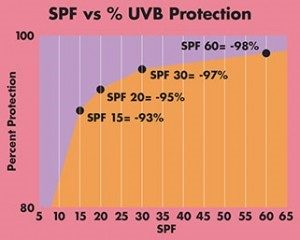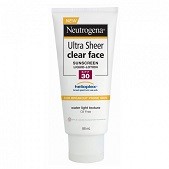

There can be a lot of confusion surrounding the season’s most essential skin care when it comes to SPF levels. Here are a few basic questions answered that keep thigs simple and help you choose sun protection products.

Is Higher SPF Better? The simple answer is NO according to James E. Fulton, Jr., M.D., Ph.D. and many other dermatologists. He recommends against anything greater than SPF 30, which blocks 97% of UVB rays. Bumping up to SPF 50 blocks 98% and the difference is not worth it. That additional 1% protection is gained at the expense of a higher dose of UV blocking chemicals, which can irritate sensitive skin and may have additional health implications. It just makes sense to minimize your exposure to these ingredients, especially when the additional sun protection they offer is so negligible!
What type of sun screen is best? Undoubtedly it is zinc oxide and the second best is titanium dioxide. 3rd place would be chemical sunscreens with Oxybenzone being the most toxic. Many people do not realize that most sunscreen products take 30-45 minutes until they begin to work. EXCEPT the mineral sunscreen zinc oxide or titanium dioxide. Look for these active ingredients for your facial and body sunscreen products.
The American Academy of Dermatology (AAD) recommends reapplying sunscreen every two hours no matter what level SPF you’re using, and especially after swimming or sweating. And no amount of SPF provides 100% protection. For intense protection apply body and face spf one hour before you get to the sunny area and then again when you arrive and every two hours thereafter.
Whatever sunscreen you choose, make sure it’s labeled “broad-spectrum,” which provides protection from the harmful effects of UVA and UVB rays.
Acne clients tip-for non-clogging great sunscreen for the face that will not break you out our favorites are;
Peter Thomas Roth Instant Mineral spf 30

Neutrogena Ultra Sheer Clear Face spf 30
